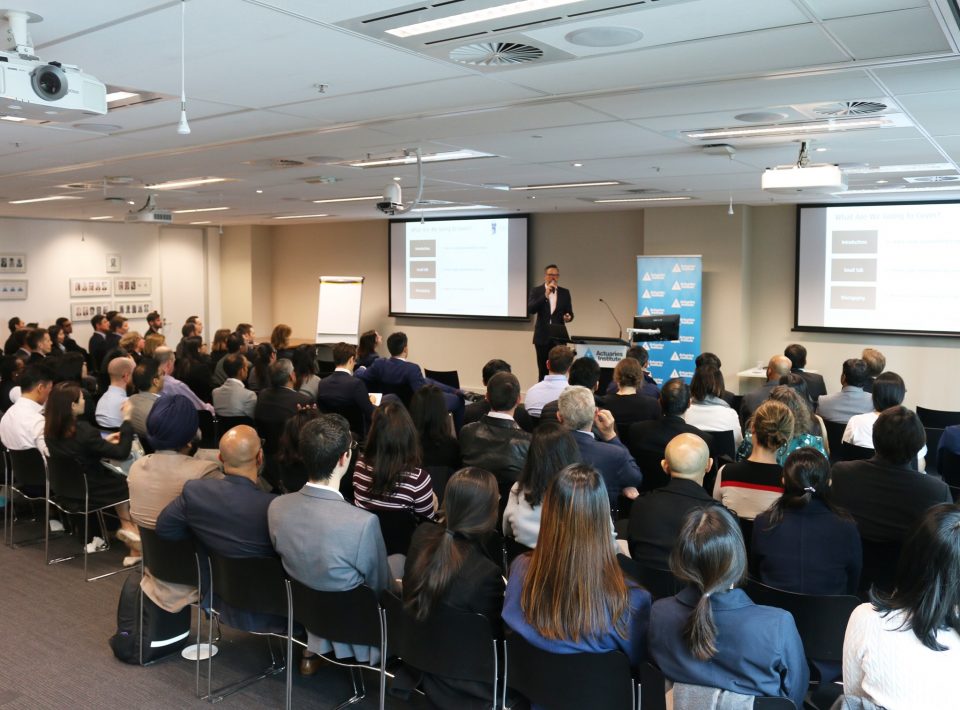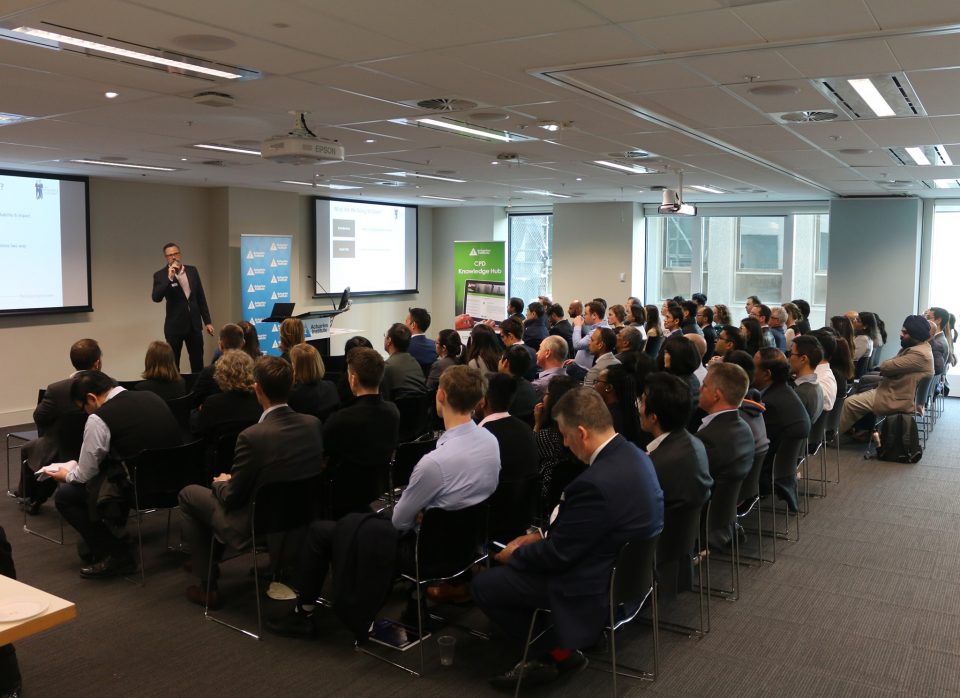
Overcoming the challenges of networking
On Monday 9 September I had the pleasure of speaking at the Actuaries Institute in Sydney. I was asked to speak on a topic which for many actuaries is seen as a challenge…networking.
Nowadays, I spend my time coaching and training highly technical specialists how to develop their softer skills of leadership. However, as I explained to the audience, I didn’t start off as the socially confident person I am today. Right from a small child and into my mid-twenties I was a very shy and socially awkward person. In my mid-twenties, I decided to do something about it, so I studied to become a psychologist in the UK. Through a series of events including both study and practice, I metamorphosed into the person I am today. Considering where I started from, if I can do it, anyone can do it.
During the talk I described what I call the ‘technical ceiling’. This is where someone does well at school in the maths and sciences, thereby gaining entry to a good university. From there this person does well and gets into a good company in a graduate scheme. He or she does well and is promoted a number of times due to their technical competence. This is the point at which he or she hits the technical ceiling. Up until this point the job was all about technical prowess.
However, beyond the ceiling the currency is no longer expertise but relationships and dealing with emotions. At this point, the everyday actuary starts to feel the pinch.
I described the ‘Three Pillars’ that make up an exceptional leader of people. Namely, how to understand, influence and connect which are like the legs of a stool. This ability to understand is not conceptual but emotional. It is the ability to read the emotions of others, to see the world through their eyes. Influence is the ability to get cut through with your message and it is the multiplier effect. When you can truly influence you can be omnipresent as people are doing what you need them to do even when you are not there. Finally, connecting is the ability to relate to just about anyone, from the janitor to the board member. If any of these three pillars is missing the stool will not balance. Yet when they are all fully developed, you have a leader with an incredible ability to get results through others.

I went on the share some practical tips with the audience on how to get some easy wins at a networking event. This is related to the ‘connection’ pillar mentioned above. The first aspect I discussed was how to come across as approachable and confident. This is a technique I call the ‘left eye gaze’. Essentially, studies in western culture1 have found that someone who can hold the eye contact of another is seen as more confident, warm and trustworthy. The technique involves focusing on the other person’s left eye when talking to him or her. Why? Because the left side of the face displays slightly more emotional cues for approximately 70% of people. So, if you focus on a person’s left eye as you speak with him or her, you will have more solid eye contact as well as being able to read more emotional cues.
Another technique I shared was how to read a room when you walk into a networking event. You will often be faced with different configurations of people. Individuals, pairs, trios or larger groups.
My top tip would always be to approach groups of three or more.
Why? Because if you approach an individual it will be easier, but you may get stuck with that person. Pairs may have broken away from a bigger group to have a deep and meaningful conversation. Whereas, a group of three or more is likely to be less intimate and therefore easier to approach and exit from.
Then we looked at how to build a robust conversation. At this point I did not get into the content of what to say, as this will always be different. Instead I spoke about process. How do you avoid the three fatal flaws of a poor conversationalist? I started by identifying them.
- The first flaw is to ask too many questions without actually sharing anything about yourself in return. This can come across like an interrogation.
- The second flaw is to only speak about yourself, showing a complete disregard for anyone else.
- The third flaw is to stand there like a lemon and say nothing at all, being a complete passenger.
So, the technique I shared was called Question, Validate, Reciprocate (QVR).
- You start by asking an open question e.g “so what do you do for work?”
- You validate the response by showing interest in the response and sharing any thoughts or experiences on the topic.
- Finally, unless someone has already asked you the same question back, you answer your own question (reciprocate) e.g. “as for me, I work as an executive coach…”
This process keeps the conversation flowing and avoids any tumbleweed moments.
“Thank you Duncan, super helpful tips! From now on, I will practice the QVR technique and avoid the three fatal flaws of a poor conversationalist.”
Quote from a member of the audience.

Finally, we discussed how to disengage gracefully from a conversation. The first tip I shared was to ‘end on a high’. Never wait to leave a conversation when it has dried up. You will be remembered as the person who was socially awkward. Always end the conversation when you are still being engaged and are being engaging. In this way you leave the audience wanting more.
But how do you actually exit? You use an approach I call ‘end on a compliment’. Most people will say something along the lines of, “it has been great to meet you, but I have to go now”. This firmly leaves a feeling of rejection in the other party. A simple reverse of this order can make a world of difference. You start by announcing your exit, e.g. “I have to go now.” Then you use the word “but” and you end on a genuine compliment, e.g. “I really enjoyed our conversation about XYZ, it was really thought provoking. I hope to find out more if we meet again.” This simple reversal of the order leaves a warm and fuzzy feeling with the person you are now able to move away from easily.
The talk I gave was a ‘lick of the ice cream’ when it comes to the armory of tools and techniques I have to share on this topic.
If you missed the session or would like to go deeper into it, then join me on 14 October at the Actuaries Institute in Sydney for the Art of Engagement masterclass. On this full day of experiential learning I will be going much deeper into the content from my Amazon bestselling book, Engage: A practical guide to understanding, influencing and connecting with people. The day will be full of experiential learning. Register for the event today.
For further articles, videos and webinars, check out my website.
1 – Blackburn, K. & Schirillo, J. Exp Brain Res (2012) 219: 447. https://doi.org/10.1007/s00221-012-3091-y
CPD: Actuaries Institute Members can claim two CPD points for every hour of reading articles on Actuaries Digital.






